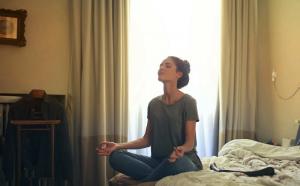Creative visualization: this is how it is used to reach your goals
There is a famous quote traditionally attributed to the famous film producer Walt Disney that says: “If you can dream it you can do it”. Although at first it may sound a bit utopian, there are a series of techniques to which this phrase could well be applied.
Creative visualization is one of them.. This cognitive-based technique is based on a precept very similar to that of this famous quote. Next, we explain what it consists of and how we can practice it.
- Related article: "The psychology of creativity and creative thinking"
What is creative visualization?
Creative visualization in a cognitive technique in which, using our imaginations, leads us to create a series of mental images on which we project our goals.
The objective of this creative visualization of our objectives and vital changes that we want to achieve is increase our self-esteem, self-confidence and facilitate coping before these changes.
In addition, the practice of this technique can help us modify our emotions and feelings that we have regarding our future; facilitating the experimentation of well-being both at the individual psychological level and at the social level.
Creative visualization does not consist of anything mystical or enigmatic, it is about using our imagination to modify our thoughts. Having positive thoughts and images about what we want can unconsciously condition us to get it.
Actually, we use creative visualization almost daily, it's just that we are not aware of it and we do not do it in an orderly or regulated way.
- You may be interested in: "Imaginative People Have These 11 Traits In Common"
A help to lead us to action
This technique is not as easy as it seems. We cannot achieve our dreams just by imagining them. Each person, due to her beliefs, has certain limitations when it comes to changing certain aspects of her life.
Therefore, it is necessary to keep an open mind and overcome our limiting beliefs. It is not enough to fantasize. This will take a bit of time, but with practice we will get things to start to change.
Almost all of us repeatedly think about everything around us. We spend hours mulling thoughts about our current situation, continually recreating the same type of circumstances. However, with creative visualization we can modify these thoughts and visualize what we want to change.
Guidelines for Creative Visualization
There are some disagreements about the guidelines to follow for creative visualization. Some assumptions, such as the computational theory of images, have developed a series of regulated and ordered guidelines. However, other theorists or practitioners are much more flexible when drawing up rules for its practice.
However, they all have several things in common. Below we present a series of steps to follow in order to carry out creative visualization satisfactorily.
1. Have clear goals
First of all it is essential to know what we want to achieve. Being clear about our objectives is essential to be able to focus on them.
In addition, a key requirement is that these be realistic and sensible so that we can assume them well. For example, even if we dedicate ourselves every day to imagining that we have won the lottery, this is neither realistic nor is it in our hands; so it is unlikely that we will get it.
- Related article: "10 tips to achieve your goals"
2. Generate mental images
Once we are clear about what we want to achieve, we give way to the mental generation of these images. Using memory and imagination processes we must mentally recreate those situations or goals that we want to achieve.
It is important to use all our senses and be as concrete as possible.
3. Keep Visualizing Creative
This means preserve and sustain these images over time, intentionally. For this we can settle in a quiet place without distractions, we breathe deeply and mentally reproduce these images.
It is advisable to carry out this practice, at least, twice a day for about 10-15 minutes. Creating a routine is essential so that these images do not decay or degenerate over time.
4. Inspect the images
During this phase, we must inspect the mental image once we have created and maintained it for a while.
It is necessary to explore it carefully and make sure that it is the way we want it. As well as perceive what feelings and emotions it generates in us and make sure they are positive.
5. transform images
Finally, after inspecting the image we can modify or alter it according to whether it causes us negative emotions or not. If there is something in it that does not quite convince us, we must reflect again and find that point that brings us well-being and seems satisfactory to us.
Tips for Creative Visualization
In addition to the steps to follow for the creative visualization of mental images that reflect our goals, there are a series of recommendations for this technique to be carried out in a effective.
First of all, and as mentioned above, we must develop our open-mindedness. Keeping an open mind is essential to adapt and manage the changes that surround us. As well as to be able to identify the opportunities that are presented to us in life.
Furthermore, it is vital to maintain a positive attitude towards our mental images. Through using reinforcing thoughts and words we can combat our doubts and negative thoughts.
Finally, as with everything we set out to do, we must be constant and believe in ourselves. If we stop trying right off the batWe probably will never get it.
- You may be interested in: "The "Mental Training" applied in sports psychology"
therapeutic applications
In the therapeutic field, creative visualization aims to provide the patient with tools to face the difficulties or setbacks that are inherent in the course of life.
This technique, guided by a professional in psychology or mental health, makes it easier for the person to replace those images or thoughts that maintain or worsen their current situation, for others who provide solutions to their problems and therefore greater well-being psychological.
The objective is to educate the patient in the creation of mental images that change their perspective of the problem and provide plausible solutions.



